Leak Testing: A Guide
Leak Testing: A Comprehensive Guide
Leak testing is a critical procedure used by inspectors to determine if an object or system is operating within a defined leak limit. This process ensures that the integrity of containers, systems, and components is maintained, especially when they are designed to hold liquids or gases under pressure.
Leaks occur when there's a defect—such as a hole, crack, or seal failure—in a structure, allowing the contents to escape. Leak testing uses pressure to detect these defects, making it an essential part of maintenance and quality control in various industries. The goal is to identify and fix issues before they lead to failures, safety hazards, or product recalls.
Leak testing is widely used in applications where the containment of fluids or gases is crucial. It is particularly important in industries such as automotive, medical devices, consumer goods, and packaging, where even small leaks can have significant consequences.
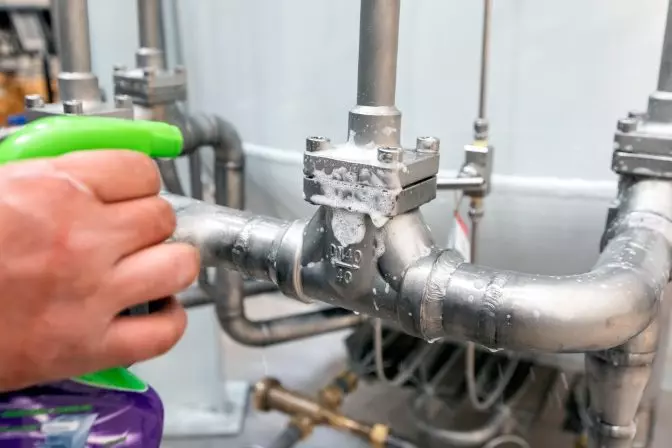
One of the most common inspection techniques, leak testing falls under the broader category of non-destructive testing (NDT). This means that the object being tested remains intact and undamaged during the process. NDT methods are vital for maintaining the reliability and safety of equipment without compromising its structural integrity.
[Non-destructive leak testing is just one of the many NDT methods available. Discover more about NDT in this detailed guide.
What Is Leak Testing?
Leak testing involves using pressure to detect flaws in objects that could lead to leakage. When a substance escapes from a container, it moves from an area of high pressure to low pressure. Leak testing takes advantage of this natural flow to identify where leaks might be occurring.
This method is typically applied to closed systems where the presence of a leak could compromise performance or safety. The effectiveness of a leak test depends on the material and design of the object being tested. Different materials respond differently to pressure, which can affect how easily a leak is detected.

Inspectors look for several types of defects during leak testing, including:
- Cracks
- Holes
- Weakened seals
- Other imperfections that may allow gas or liquid to escape
Industries that frequently use leak testing include automotive, medical devices, packaging, and sealed electronics. These sectors rely on leak testing to ensure product safety, compliance, and performance.
Advances in Leak Testing
Recent technological advancements have significantly improved the accuracy and efficiency of leak testing. Innovations in sensors, valves, and data collection tools have made it easier to detect even the smallest leaks with greater precision.
The integration of the Internet of Things (IoT) has also revolutionized the field. Inspectors can now collect, monitor, and share leak testing data remotely, enabling faster decision-making and better maintenance planning. This real-time access to data allows engineers and managers to make informed choices about asset health and performance.
Leak Testing Methods
There are several common leak testing methods, each suited for different applications:
- Burst Test: Applies increasing pressure until the device fails, useful for determining strength limits.
- Chamber Test: Used for sealed systems without an opening for pressure introduction.
- Pressure Crack Test: Detects weeping in valves using downstream sensors.
- Pressure/Vacuum Test: Measures pressure differences between the test object and a reference volume.
- Pressure Decay Test: Identifies leaks by monitoring pressure changes under positive pressure.
- Vacuum Decay Test: Similar to pressure decay but uses negative pressure.
- Occlusion Test: Detects obstructions in gas flow paths.
Most leak tests operate at low pressures, typically around 15 psi or 25% of the design pressure, whichever is lower. This helps prevent damage while still identifying potential leaks.
Key Considerations in Leak Testing
While leak testing is a powerful tool, it requires careful planning and execution. Here are some key factors to consider:
Acceptable Leak Rate
Different industries have varying standards for what constitutes an acceptable leak rate. Some leaks may require only monitoring, while others demand immediate action. Understanding these thresholds is crucial for effective maintenance.
Manufacturing Purpose
The original function of the object being tested should guide the leak testing approach. For example, a car part may be designed to prevent gas escape, whereas a medical device might need to maintain a specific internal environment.
Material Properties
The material of the object affects how it responds to pressure. Brittle or highly flexible materials may expand or deform under stress, which can impact test results and require adjustments in testing procedures.
Medium Characteristics
The substance being contained also plays a role. Gases and liquids behave differently, and their molecular size determines the type of defect that could cause a leak. Additionally, pressure levels must be carefully selected to avoid damaging the object or yielding unreliable results.
Leak Testing Equipment
Various tools and instruments are used to perform leak tests efficiently and accurately. Here are some common examples:
Air LeakAGE Inspection Devices
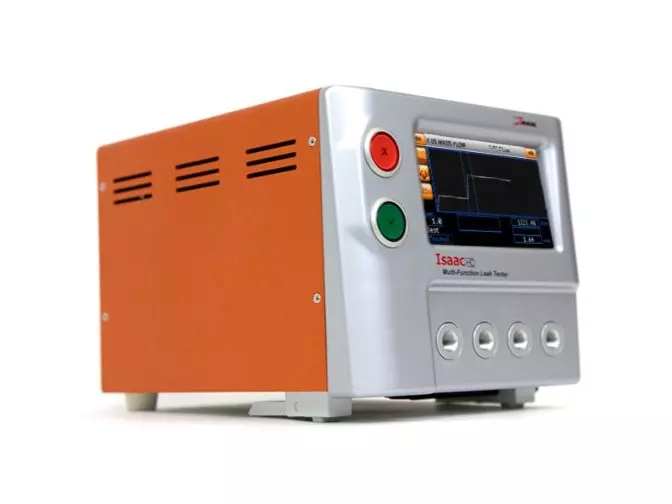 Photo credit: Zaxis
Photo credit: Zaxis
Air leak testing devices provide real-time data and are used for various methods, including vacuum decay and pressure decay. They are essential for accurate and efficient leak detection.
Compact Pressure Decay Leak Tester
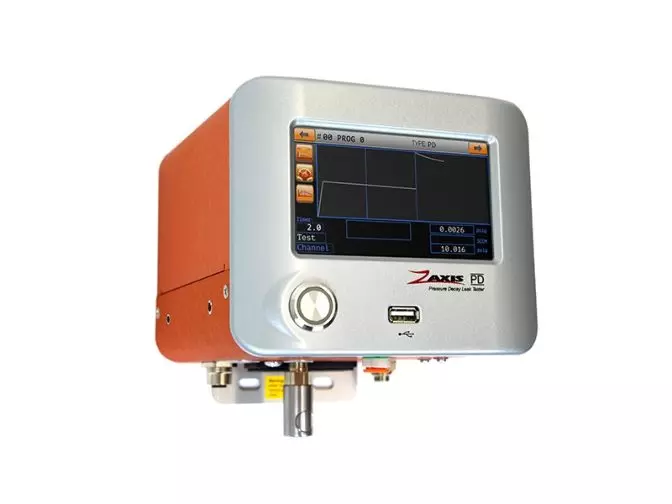 Photo credit: Zaxis
Photo credit: Zaxis
These compact testers reduce connection volume, improving sensitivity and reducing test time. Ideal for use near fixtures, they offer quick and reliable results.
Large Display Leak Tester
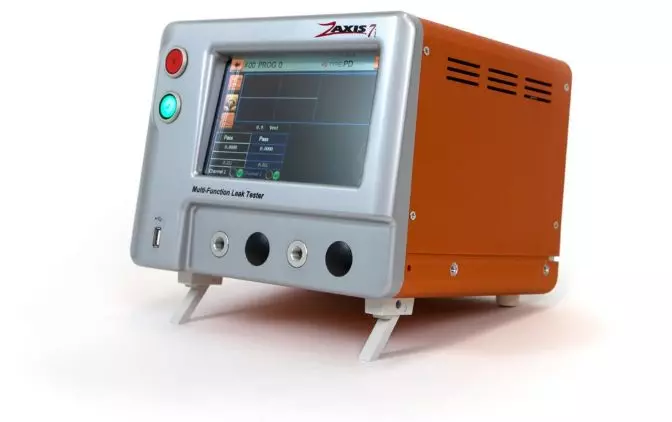 Photo credit: Zaxis
Photo credit: Zaxis
Larger display models, like the Zaxis 7i, offer enhanced features such as larger screens, higher capacity, and faster testing speeds. These are ideal for complex or large-scale testing environments.
Leak Standard
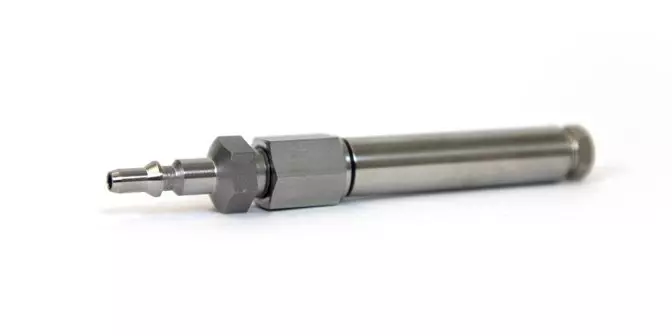
Photo credit: Zaxis
Leak standards are used to calibrate and validate testing procedures. They help define test parameters and compare the performance of different leak detection systems.
Leak Testing Standards and Codes
Leak testing is often governed by industry-specific standards and codes. These guidelines ensure consistency, accuracy, and safety across different applications. Below are some of the most commonly referenced standards:
ASME (American Society of Mechanical Engineers)
- ASME B31.3: Pressure Testing and Leak Testing Requirements for Process Piping
ASTM (American Society for Testing and Materials)
- ASTM E432-91(2017)e1: Standard Guide for Selection of a Leak Testing Method
- ASTM E493 / E493M - 11(2017): Standard Practice for Leaks Using the Mass Spectrometer Leak Detector in the Inside-Out Testing Mode
- ASTM E499 / E499M - 11(2017): Standard Practice for Leaks Using the Mass Spectrometer Leak Detector in the Detector Probe Mode
- ASTM E1003 - 13(2018): Standard Practice for Hydrostatic Leak Testing
- ASTM A1047 / A1047M - 05(2019): Standard Test Method for Pneumatic Leak Testing of Tubing
- ASTM E1603/E1603M-11(2017) Standard Practice for Leakage Measurement Using the Mass Spectrometer Leak Detector or Residual Gas Analyzer in the Hood Mode
- ASTM F2164 - 21: Standard Practice for Field Leak Testing of Polyethylene (PE) and Crosslinked Polyethylene (PEX) Pressure Piping Systems Using Hydrostatic Pressure
- ASTM F2786 - 16(2021): Standard Practice for Field Leak Testing of Polyethylene (PE) Pressure Piping Systems Using Gaseous Testing Media Under Pressure (Pneumatic Leak Testing)
- ASTM E2930 - 13(2021): Standard Practice for Pressure Decay Leak Test Method
- ASTM WK76995: New Practice for Field Leak Testing of Polyamide-12 (PA12) Pressure Piping Systems Using Gaseous Testing Media Under Pressure (Pneumatic Leak Testing)
ISO (International Organization for Standardization)
- ISO 20484:2017(en): Non-destructive testing — Leak testing — Vocabulary
- ISO 20485:2017(en): Non-destructive testing — Leak testing — Tracer gas method
- ISO 20486:2017(en): Non-destructive testing — Leak testing — Calibration of reference leaks for gases
- ISO 27895:2009(en): Vacuum technology — Valves — Leak test
99% Alumina Ceramic,Alumina Ceramic Sleeve,Custom Ceramic Alumina,Alumina Ceramic Insulator
Yixing Xiangyang Jiujiu Chinaware Industry Co., Ltd. , https://www.xyjjceramic.com
